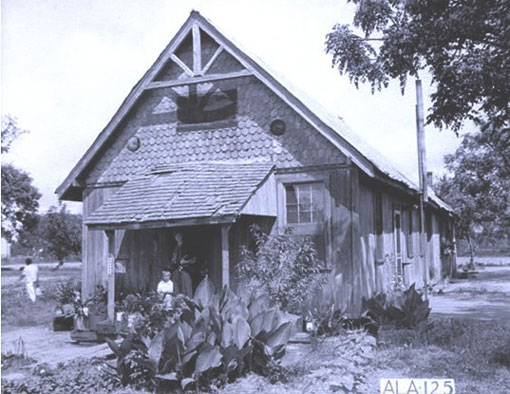
The Choctaw have lived in modern-day Mississippi and Alabama far longer than documented history can tell. One of their origin myths tells of how the nation traveled for many years from a place far in the west, past the river and the mountains and the snow, carrying the bones of their ancestors on their backs and led by a medicine man with a red pole. Every night when they made camp, the medicine man would thrust the pole straight into the ground, and every morning it would lean in the direction the Choctaw were to travel—until one morning they woke to find the pole standing straight and knew they had come to the place where they would bury their ancestors and make their home. The place was the Mississippi River valley, the burial site is a great mound called Nanih Waiya that still exists today, and the morning was somewhere between 4,000 and 8,000 years ago.
The largest Choctaw communities today are in Mississippi and especially in Oklahoma, where the nation was relocated during Indian Removal in the 1830s. But there is also a small group still living in Alabama: the MOWA Band of Choctaw Indians, named for their location along the Mobile-Washington County line. The MOWA reservation sits in a forested, stream-threaded land where the Alabama and Tombigbee Rivers meet, between the cities of McIntosh, Mt. Vernon, and Citronelle in the southwestern corner of the state.
The Choctaw were in Alabama when De Soto led his exploration into the Gulf region in the early 1540s and when the French arrived in 1699. They remained during the French and Indian War, the Revolutionary War, and the War of 1812. They resisted repeated state and federal demands for their territory until 1801, when they were forced to make the first of many land cessions to the United States. Despite making efforts to assimilate into American culture and even fighting alongside Americans in the War of 1812, when the 1830 Indian Removal Act passed, the Choctaw were the first to walk the Trail of Tears out to Oklahoma. But a few thousand remained behind, hiding in the swamps and pine barrens of the Alabama-Tombigbee watershed. They were eventually joined by refugees from other Indian tribes, including Creek, Cherokee, and Apache. Today, around 3,600 MOWA live on or around the reservation.